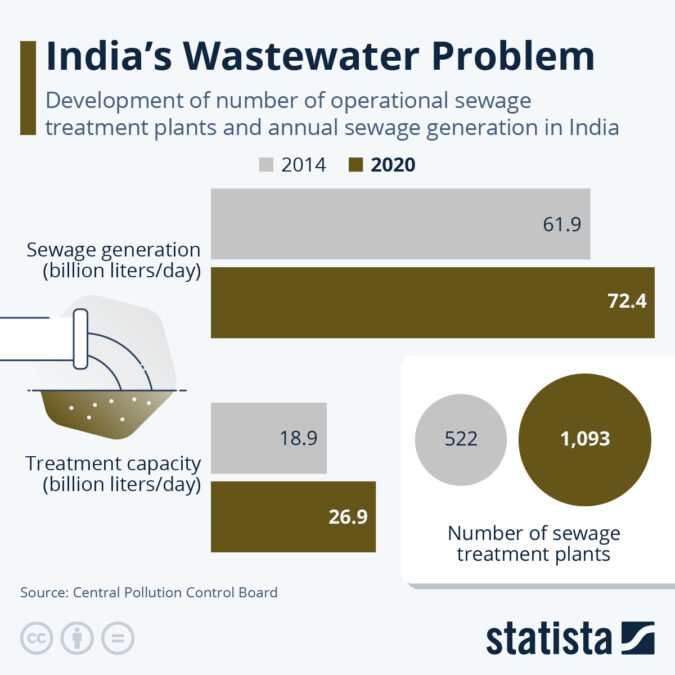How Much Of India’s Wastewater Is Left Untreated?
As is the case with rapid population growth and urbanization in many so-called developing nations, waste management becomes a problem not only in rural areas but also in densely populated cities.
As Statista’s Florian Zandt details below, a textbook example of this growth outpacing infrastructural capacities is the situation in urban hotspots in India like Delhi, where a report by Euronews from May 2023 mentions neighborhoods with “open gutters […] filled with plastic and grey-colored water”. While the number of operational sewage treatment plants doubled between 2014 and 2020, the capacity for water treatment is still severely lacking.
You will find more infographics at Statista
According to the latest annual report by the Central Pollution Control Board, India generated 72.4 billion liters of wastewater per day across all provinces, with Maharashtra (9.1 billion), Uttar Pradesh (8.3 billion), Tamil Nadu (6.4 billion) and Gujarat (5.0 billion) being responsible for around 40 percent of wastewater.
The 1,093 sewage treatment plants only had operational capacities of 26.9 billion liters of wastewater per day, with around 400 plants either non-operational or under construction as of the latest available tally from 2020/2021. This translates to only 37 percent of sewage being treated, exacerbating the risks of communicable diseases and contaminated food and drinking water.
While India is seemingly hard-pressed to keep up with the amount of wastewater its population generates, measures to grant more people access to potable water and basic sanitation and hygiene were scaled up significantly in recent decades. For example, the Swachh Bharat Abhiyan campaign, translatable to Clean India, initiated in 2014 aims to eliminate open defecation by installing upwards of 100 million toilets in the country.
Nevertheless, in 2022, only 75 percent of rural Indian households had at least basic access to sanitation, while 30 percent of homes didn’t have their own washing facility with soap and water according to data from the WHO and Unicef’s Joint Monitoring Programme for Water Supply, Sanitation and Hygiene.
Tyler Durden
Sat, 05/25/2024 – 22:45

